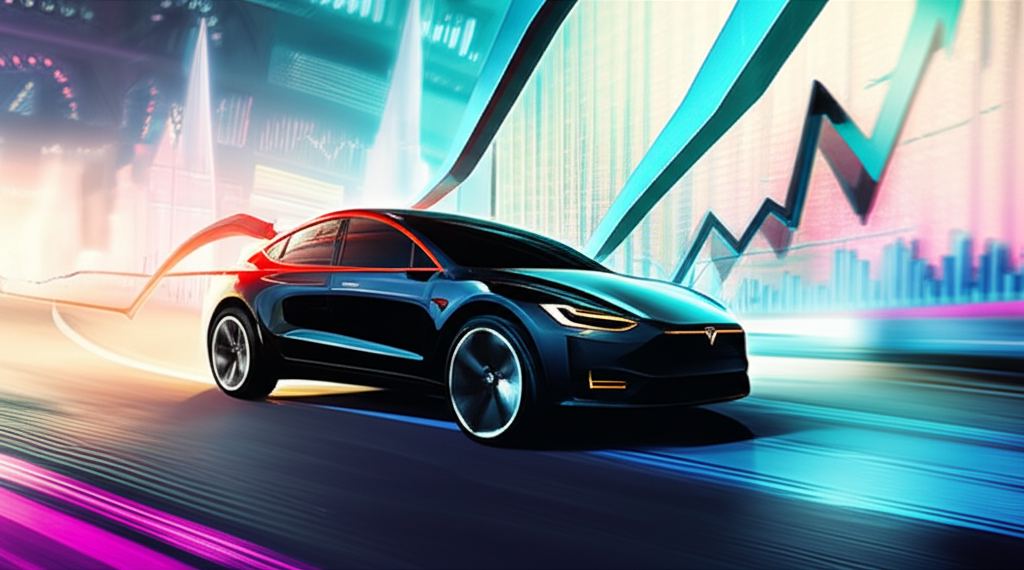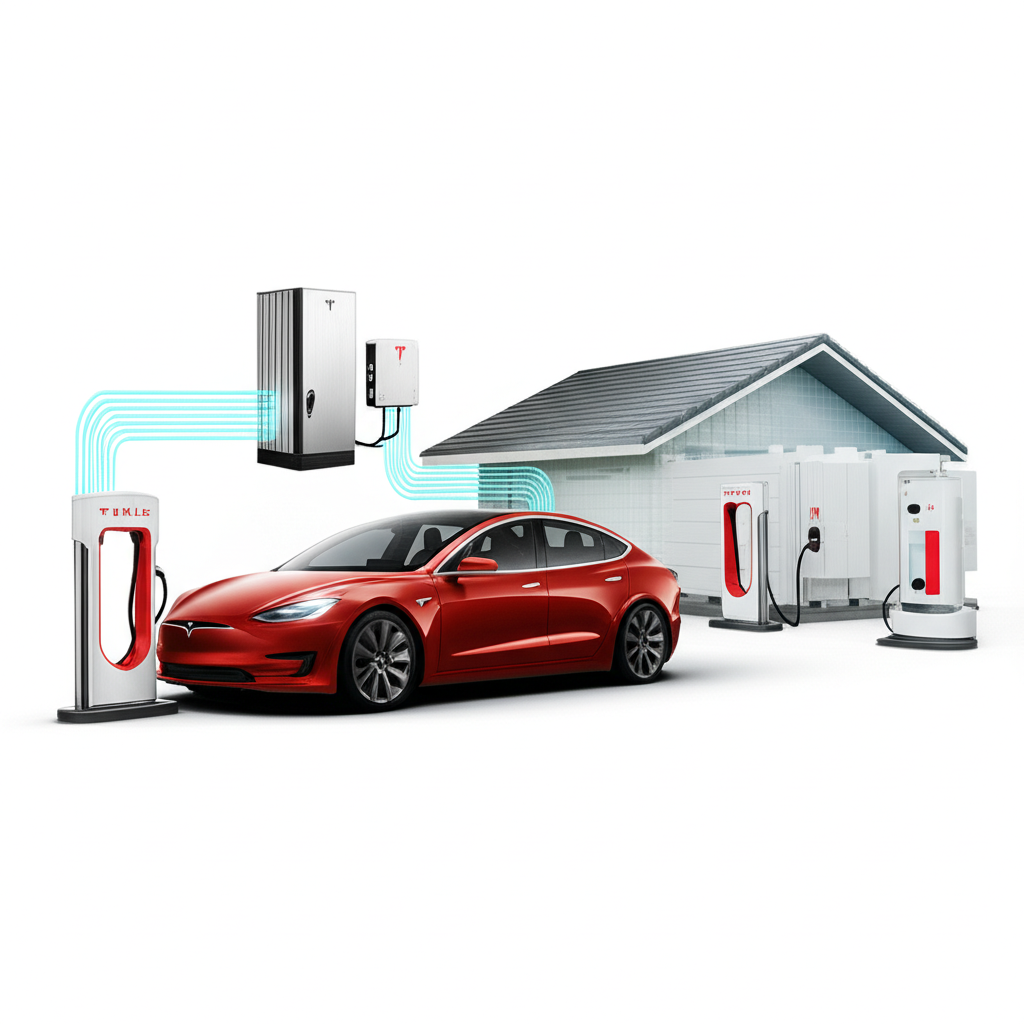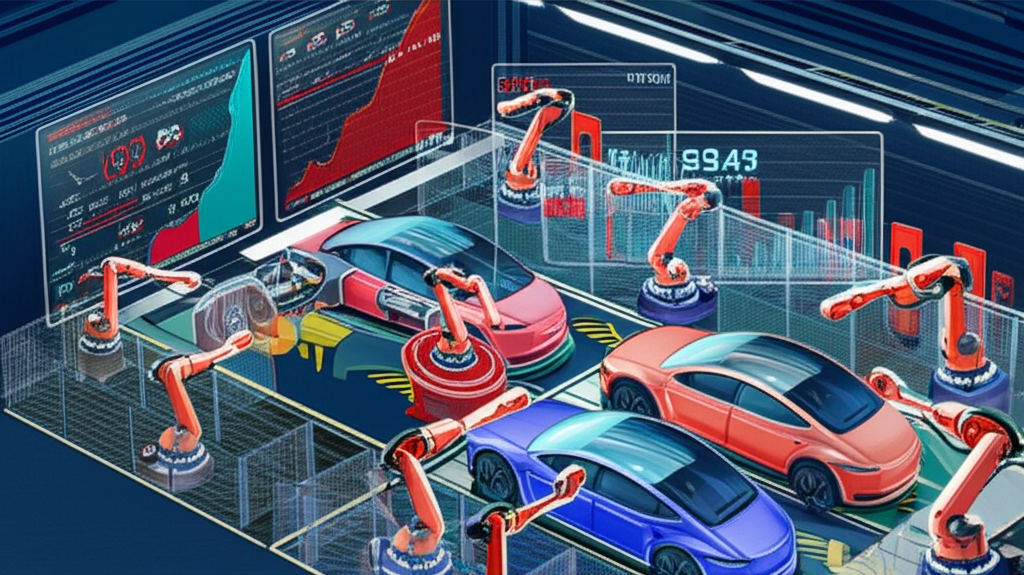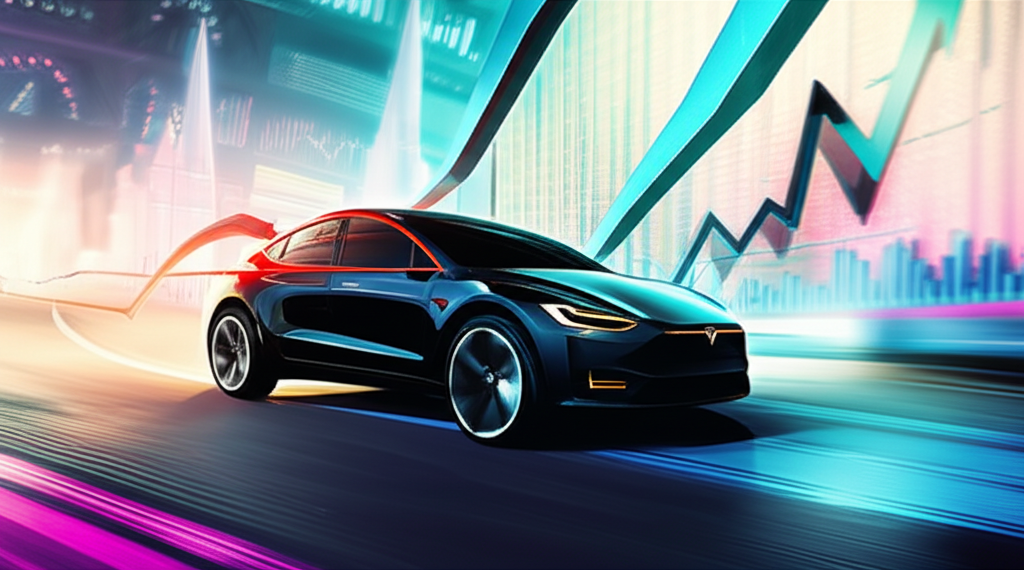Introduction: Defining “Undervalued” for a Hyper-Growth Stock Like Tesla

The debate over whether Tesla (TSLA) is undervalued isn’t just another stock market discussion—it’s a clash of investment philosophies, technological optimism, and financial pragmatism. For a company that sits at the crossroads of automotive disruption, artificial intelligence, and sustainable energy, traditional valuation frameworks often fall short. Unlike established corporations whose worth is anchored in predictable earnings and dividends, Tesla’s price reflects a bet on what it might become, not just what it is today. This forward-looking nature makes the stock a lightning rod for disagreement: while some see a transformative powerhouse trading below its intrinsic value, others view it as a speculative asset inflated beyond reason. To navigate this complexity, we’ll dissect Tesla through both hard financial data and the evolving narratives that shape investor sentiment—delivering a balanced, in-depth assessment of whether the stock offers hidden value or priced-in perfection.
Tesla’s Core Business & Market Dominance: The Foundation of Its Value

Tesla’s strength lies not only in its ability to build high-performance electric vehicles but in its vertically integrated ecosystem that spans transportation, energy, and software. From the Model 3 sedan to the Cybertruck, each vehicle is part of a broader vision powered by proprietary technology—from battery architecture to full-stack software. Beyond cars, Tesla has built one of the most extensive fast-charging networks globally with Supercharger stations, reducing range anxiety and enhancing customer loyalty. Its energy division, featuring Powerwall for homes and Megapack for utility-scale storage, is scaling rapidly, positioning Tesla as a key player in the global transition to renewable energy. This convergence of hardware, software, and infrastructure creates a moat that’s difficult for competitors to replicate. The brand itself has become synonymous with innovation and sustainability, giving Tesla pricing power and a fiercely loyal customer base. It’s this multi-dimensional advantage—deep integration, technological control, and ecosystem lock-in—that forms the bedrock of its long-term value proposition.
Current Financial Performance and Key Metrics (2023–Present)

Tesla’s financials over the past year reveal a company navigating growth amid external pressures. In 2023, the company delivered more than 1.8 million vehicles worldwide, cementing its position as a leader in the EV market despite macroeconomic headwinds and aggressive pricing strategies aimed at maintaining volume. Revenue topped $96 billion, driven not only by vehicle sales but also by a 47% year-over-year increase in energy generation and storage deployments. However, profitability has shown signs of strain—gross margins dipped due to price cuts, raw material costs, and ramp-up expenses at new Gigafactories in Berlin and Texas. Operating margins, while still healthy compared to legacy automakers, have trended downward from peak levels, reflecting Tesla’s strategic reinvestment into innovation and global expansion. On the positive side, free cash flow remained robust at over $7 billion, enabling continued investment in R&D, new production facilities, and next-generation technologies like the 4680 battery cells. As investors assess Tesla’s current footing, they weigh these operational metrics against the company’s long-term trajectory—looking beyond quarterly fluctuations to gauge sustainable competitive advantages.
Quantitative Valuation: Is TSLA’s Price Justified by the Numbers?

Determining whether Tesla’s share price aligns with its fundamental value requires more than surface-level analysis. Given the company’s hybrid profile—part automaker, part tech innovator—standard valuation tools must be applied with nuance. While some metrics suggest overvaluation, others point to untapped potential, depending on the assumptions used. The key lies in understanding how different models interpret Tesla’s unique blend of current performance and future promise.
Intrinsic Value via Discounted Cash Flow (DCF) Analysis
The Discounted Cash Flow (DCF) model remains one of the most respected methods for estimating a company’s intrinsic value, especially for growth-oriented firms like Tesla. This approach forecasts future free cash flows and discounts them back to present value using a required rate of return. For Tesla, the outcome hinges on critical assumptions: long-term revenue growth, margin expansion, capital efficiency, and the pace of innovation monetization. A bullish DCF scenario might assume 20–25% annual revenue growth over the next five years, driven by increased vehicle deliveries, higher-margin software services like Full Self-Driving (FSD), and exponential growth in energy storage. Under such conditions, and with improving operating leverage, Tesla’s intrinsic value could significantly exceed its current market price. On the other hand, a conservative model incorporating slower EV adoption, margin compression from competition, and delayed FSD rollout could yield a much lower fair value. This sensitivity underscores the speculative nature of valuing a company whose future is tied to disruptive breakthroughs rather than steady income streams.
Comparative Multiples: P/E, P/S, and EV/EBITDA
When compared to traditional automakers, Tesla’s valuation multiples appear stretched. As of mid-2024, Tesla’s trailing Price-to-Earnings (P/E) ratio has fluctuated between 60x and 80x, far above Ford’s ~10x or GM’s ~6x. Similarly, its Price-to-Sales (P/S) ratio often exceeds 6x, while legacy peers trade below 1x. The Enterprise Value-to-EBITDA (EV/EBITDA) ratio also reflects this premium. Critics argue these figures signal overvaluation, pointing out that Tesla’s earnings growth has slowed relative to its price surge. However, supporters counter that such comparisons are misleading. Tesla isn’t merely competing in the auto industry—it’s building a platform for AI-driven mobility and energy infrastructure. When benchmarked against high-growth technology companies like NVIDIA or Amazon, Tesla’s multiples look less extreme, though still elevated. The divergence highlights a core tension: should Tesla be valued as a manufacturing business or a scalable tech platform? The answer dramatically affects how investors interpret its current price.
Fair Value Estimates from Leading Analysts (e.g., Morningstar, Wall Street Consensus)
Analyst opinions on Tesla’s fair value are as varied as the company’s business lines. Morningstar, known for its conservative, margin-of-safety-driven approach, has frequently rated Tesla as overvalued. Their DCF models assume moderate growth and limited success in FSD commercialization, leading to fair value estimates below the current share price. In contrast, growth-focused analysts at firms like ARK Invest or Baird have issued price targets exceeding $1,000, banking on Tesla becoming a dominant force in robotaxis, AI, and energy networks. According to Yahoo Finance’s consensus analyst estimates, the average 12-month target hovers above the current market level, suggesting a general belief in upside potential. Yet, the spread between the highest and lowest targets—sometimes exceeding $500—reveals deep uncertainty. This wide dispersion isn’t unusual for disruptive companies, but it does signal that Tesla’s valuation rests more on narrative and vision than on universally agreed-upon fundamentals.
Future Growth Catalysts: The Bullish Case for Tesla’s Undervaluation
Bullish investors argue that Tesla’s current price fails to reflect the magnitude of its upcoming transformation. They see a company on the cusp of unlocking entirely new revenue streams—one that could redefine industries far beyond electric vehicles.
Beyond EVs: AI, Robotics, and Energy Storage
Tesla’s ambition extends well beyond selling cars. Its Full Self-Driving (FSD) software, if fully validated and scaled, could generate billions in recurring subscription revenue or form the backbone of an autonomous ride-hailing network. The company’s robotaxi vision, expected to launch in the coming years, could disrupt urban transportation by offering a cheaper, safer alternative to human-driven vehicles. Meanwhile, the Optimus humanoid robot project, though still in development, represents a bold entry into general-purpose robotics—an emerging field with vast applications in manufacturing, logistics, and personal assistance. Backing these efforts is the Dojo supercomputer, designed to train neural networks at unprecedented speed and scale. Simultaneously, Tesla’s energy business is gaining momentum: Megapack installations have surged globally, supporting grid stability and renewable integration, while Powerwall adoption grows among homeowners seeking energy independence. These ventures aren’t side projects—they’re central to Elon Musk’s vision of a sustainable, AI-driven future, and their combined potential may not yet be priced into the stock.
Geographic Expansion and Production Scale-Up
Tesla’s global manufacturing footprint continues to expand. Gigafactory Berlin serves as a gateway to European markets, reducing shipping times and tariffs, while Gigafactory Texas focuses on Cybertruck and next-gen vehicle production. These facilities enhance supply chain resilience and allow localized customization. As production ramps up, Tesla aims to achieve economies of scale unmatched in the auto industry—driving down per-unit costs through innovations like gigacasting, which reduces part count and assembly time. Further expansion into Asia, Latin America, and emerging markets could unlock millions of new customers. With vehicle demand rising globally and Tesla maintaining strong brand appeal, delivery growth remains a key driver of revenue and margin improvement. The company’s ability to scale efficiently will be critical in maintaining profitability amid competitive pricing pressures.
Innovation and Technological Edge
Tesla’s edge lies in its relentless focus on vertical integration and engineering breakthroughs. Its 4680 battery cells promise longer range, faster charging, and lower production costs. Its proprietary software stack enables over-the-air (OTA) updates, allowing vehicles to improve over time—a feature nearly impossible for most competitors to match. Tesla’s integration of cameras, sensors, and AI processing creates a feedback loop that enhances FSD performance with every mile driven. This closed-loop system gives Tesla a data advantage that grows wider with scale. Moreover, the company’s manufacturing innovations—like single-piece rear underbodies—reduce complexity and boost output. This culture of innovation doesn’t just improve products; it builds a durable competitive moat. For growth investors, this technological leadership justifies a premium valuation, especially when considering the long runway ahead.
Key Risks & Challenges: The Bearish Case Against Undervaluation
Despite its strengths, Tesla faces formidable obstacles that could derail its growth trajectory and compress its valuation.
Intensifying Competition
The EV landscape has evolved rapidly. Legacy automakers—GM, Ford, Volkswagen—are rolling out compelling electric models with strong brand recognition and established dealer networks. Chinese manufacturers like BYD have surpassed Tesla in quarterly EV deliveries, offering affordable, high-quality alternatives both domestically and internationally. Startups such as Rivian and Lucid are carving out niches in premium and adventure segments. This growing competition pressures Tesla to maintain aggressive pricing, which erodes margins. While Tesla still leads in software and charging infrastructure, rivals are catching up. If competitors close the innovation gap, Tesla’s market share could plateau or decline, limiting future growth and weakening its pricing power.
Regulatory Hurdles and Supply Chain Volatility
Tesla operates in a highly regulated global environment. Autonomous driving regulations vary by country and can delay FSD deployment, affecting revenue potential. Regulatory scrutiny over safety claims and driver engagement in semi-autonomous modes adds legal and reputational risk. Geopolitical tensions impact supply chains, particularly for critical battery materials like lithium, nickel, and cobalt. Disruptions in mining, refining, or transportation can spike input costs and constrain production. Additionally, trade policies and tariffs—especially in Europe and China—could hinder Tesla’s international expansion. These external factors are largely outside the company’s control but carry significant financial implications.
Valuation Concerns and Market Sentiment Shifts
Even among Tesla bulls, there’s acknowledgment that the stock is priced for near-perfect execution. The market appears to be discounting rapid growth across multiple high-potential businesses—FSD, robotics, energy, and AI. If any of these ventures underperform or take longer than expected to scale, the stock could face sharp corrections. Investor sentiment toward high-growth tech stocks has proven fickle; macroeconomic shifts, rising interest rates, or a broader market rotation into value stocks could trigger sell-offs. Furthermore, any misstep—be it a safety incident, delivery miss, or leadership controversy—can amplify volatility given Tesla’s high institutional and retail ownership. The premium valuation makes it particularly vulnerable to disappointment.
The Differentiated View: Market Narratives and Influential Investors
Tesla’s valuation isn’t just a function of financial models—it’s shaped by perception, storytelling, and the influence of market movers.
Tesla as an “AI Company”: Impact on Investor Perception
One of the most consequential shifts in recent years has been the reclassification of Tesla from an automaker to an artificial intelligence company. This narrative reframing allows investors to apply tech-sector multiples instead of auto-industry benchmarks. When framed as an AI play, Tesla’s investments in Dojo, FSD, and Optimus are no longer ancillary—they become the core of its future value. This perspective enables analysts to justify sky-high valuations based on the potential of a robotaxi fleet generating trillions in economic value. While these outcomes remain speculative, the narrative itself has real-world impact: it influences analyst ratings, media coverage, and retail investor enthusiasm. Perception, in this case, becomes a self-reinforcing driver of price.
The “Buffett Factor” and Value Investor Skepticism
Traditional value investors, exemplified by Warren Buffett, tend to avoid Tesla. Buffett’s philosophy centers on businesses with durable, predictable earnings, strong cash flows, and clear moats—traits he finds lacking in high-growth, innovation-dependent stocks. Tesla’s reliance on unproven technologies, uncertain regulatory pathways, and long-term cash flow projections makes it a poor fit for value investing frameworks. The lack of a margin of safety—buying at a discount to intrinsic value—further deters Buffett-style investors. This skepticism reflects a fundamental divide: growth investors buy future potential; value investors buy present reality. Tesla sits firmly in the former camp, which explains its absence from many value portfolios despite its market cap.
Decoding Moves by Prominent Investors (e.g., Cathie Wood’s Strategy)
The actions of high-profile investors often sway market sentiment. Cathie Wood, CEO of ARK Invest, has been one of Tesla’s most vocal supporters, frequently revising her price targets upward based on disruptive innovation models. Her firm’s research assumes massive adoption of FSD and robotaxis, projecting cash flows that justify valuations far above current levels. When ARK buys or sells Tesla shares, the market notices. Sales are often interpreted as tactical rebalancing rather than a loss of faith, especially when accompanied by public commentary reinforcing long-term conviction. Conversely, new purchases signal confidence in upcoming catalysts. These moves don’t dictate Tesla’s fundamentals, but they influence narratives, attract media attention, and can amplify short-term price movements. In a stock as sentiment-driven as TSLA, such signals matter.
Conclusion: Is Tesla Undervalued – A Balanced Perspective
Is Tesla undervalued? The answer depends on how you define value. By traditional metrics like P/E ratio, Tesla looks expensive—arguably overvalued—especially when compared to mature automakers. But valuation is not one-size-fits-all. For investors who believe in Tesla’s ability to dominate in AI, robotics, and energy, the current price may represent a reasonable entry point for a company with trillion-dollar potential. The key lies in time horizon and conviction. If Tesla executes on even a fraction of its ambitious roadmap, today’s stock price could look remarkably cheap in hindsight. However, if growth slows, competition intensifies, or innovation timelines stretch, the premium could evaporate quickly. Tesla sits at the intersection of technology, psychology, and finance—a stock where numbers tell part of the story, but narratives shape the rest. Investors must decide not just whether the math adds up, but whether they believe in the vision.
What is the fair value of Tesla stock according to current financial models and analysts?
Fair value estimates for Tesla stock vary significantly among analysts, typically ranging from below its current market price to significantly higher. This wide range reflects different assumptions about its future growth in EVs, AI, and energy, as well as varying discount rates used in models like Discounted Cash Flow (DCF). Consensus estimates often suggest some upside from the current price, but there is no single agreed-upon “fair value.”
How do investors determine if Tesla is overvalued or undervalued given its high growth potential?
Investors use a combination of methods. Growth investors often focus on future potential, using DCF models with aggressive growth assumptions for FSD, AI, and energy to project a high intrinsic value. They also compare Tesla’s P/E and P/S ratios to other high-growth tech companies. Value investors, however, tend to view its current high multiples as a sign of overvaluation, seeking more predictable cash flows and a larger margin of safety, which Tesla typically doesn’t offer based on current earnings.
What are the primary drivers of Tesla’s future valuation, particularly beyond electric vehicles?
Beyond EVs, Tesla’s future valuation is primarily driven by the success of its Full Self-Driving (FSD) technology, the development and commercialization of its Optimus humanoid robot, and the continued expansion of its energy storage solutions (Megapack, Powerwall). The market’s perception of Tesla as an “AI company” rather than just an automaker also plays a crucial role, allowing for higher valuation multiples.
Why don’t prominent value investors like Warren Buffett typically invest in companies with Tesla’s characteristics?
Warren Buffett and other traditional value investors prioritize predictable businesses, strong competitive moats, and a significant margin of safety based on current earnings and assets. Tesla, as a high-growth “story stock” heavily reliant on future technological breakthroughs and speculative cash flows, often falls outside this investment criteria due to its inherently higher uncertainty and difficulty in precise valuation.
What are the key risks that could lead to a downward revision of Tesla’s stock valuation?
Key risks include:
- Intensifying competition from traditional automakers and new EV players.
- Regulatory hurdles and delays in autonomous driving approvals.
- Supply chain disruptions and raw material price volatility.
- A slowdown in global EV demand.
- Macroeconomic downturns affecting consumer spending.
- Failure to execute on its AI, robotics, or energy ventures.
- Increased scrutiny over its high valuation multiples.
How do market narratives, such as viewing Tesla as an “AI company,” impact its perceived intrinsic value?
Viewing Tesla as an “AI company” allows investors to assign significantly higher valuation multiples than those typically given to traditional automakers. This narrative shifts focus from current vehicle sales to the vast, long-term potential of AI and robotics, justifying a premium based on future disruptive capabilities rather than just automotive industry averages.
Is Tesla a good long-term investment opportunity today, considering its current market price?
For long-term investors who believe in Tesla’s ability to innovate, dominate the EV market, and successfully monetize its AI, robotics, and energy ventures, it could be a good opportunity. However, its current market price already discounts significant future growth, meaning the investment requires conviction in its long-term vision and acceptance of higher volatility.
What role do specific financial metrics like P/E ratio and discounted cash flow (DCF) play in valuing Tesla?
The P/E ratio is used for comparative analysis but often appears high for Tesla, reflecting its growth premium. DCF analysis is critical for estimating intrinsic value by projecting future cash flows from all business segments and discounting them back to the present. Both are essential, but DCF is often preferred for growth stocks as it attempts to capture long-term potential more comprehensively.
How does Tesla’s competitive landscape influence its potential for future growth and valuation?
The intensifying competitive landscape poses a significant threat to Tesla’s market share, pricing power, and ultimately, its revenue and profit growth. Increased competition could pressure margins, slow down delivery growth, and force more aggressive pricing strategies, potentially impacting its future valuation if it fails to maintain its technological edge and brand appeal.
What are the implications of influential investors’ buying or selling decisions on Tesla’s stock performance?
Decisions by influential investors, such as Cathie Wood’s ARK Invest, can significantly impact market sentiment and short-term stock performance. Their actions are often interpreted as signals of conviction or concerns, influencing retail and institutional investors. While not always indicative of fundamental shifts, these moves can create volatility and contribute to market narratives surrounding Tesla’s perceived value.

留言